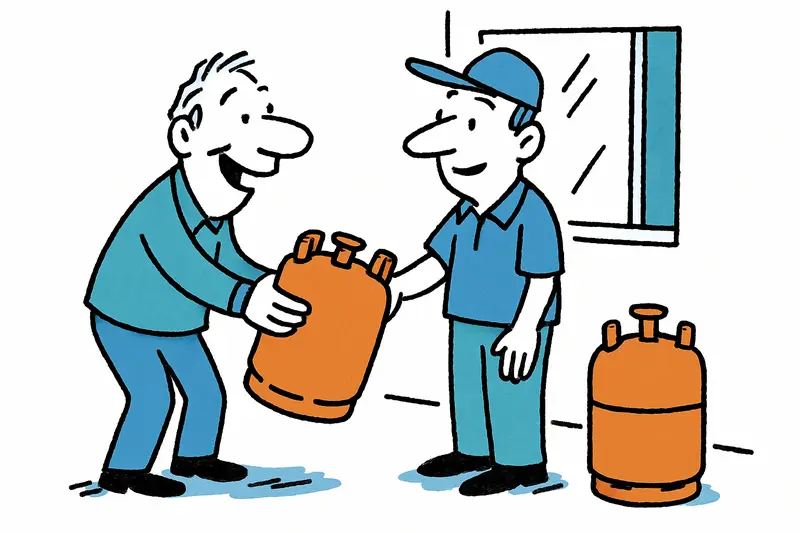Households without a natural gas connection breathe a sigh of relief: The orange butane gas bottle has been reduced by 5 percent and now costs 16.27 euros. Why the price cut is coming and what it means for consumers.
Good news for households without a mains connection
From this Tuesday, many households on Mallorca will again pay a little less at the pump for the classic orange butane gas bottle. The official selling price was reduced by five percent – the bottle now costs 16.27 euros. For people who rely on the Bombona in the mountain villages or in older houses, these are visible savings you notice on your next shopping trip.
Why is the price falling?
In short: World markets and the exchange rate make it possible. The commodity prices for propane and butane have fallen slightly (about 1.6 percent), while the euro has gained strength against the dollar (about 2.3 percent). These effects could partly offset rising transport costs — logistics have recently become significantly more expensive (+14.9 percent), for example due to higher fuel prices and less available freight capacity.
How often does the price change?
In Spain, the price for LPG bottles is reviewed every two months. The calculation is simple: commodity costs, transport and exchange rate are included. Adjustments are capped – increases or decreases may be at most five percent per round. Larger deviations are offset in later adjustments.
What does this mean for us here?
For many, the Bombona is more than just a nostalgia object: It remains an energy source for cooking and heating in areas without natural gas. At the weekly market in Inca or at Plaça Major you can see that older neighbors register the news – a smaller household budget leaves more for shopping or the next coffee round. Still, the long-term trend is downward: In Spain around 64.5 million gas bottles are circulated annually, consumption has been falling since 2010 (nearly a quarter less by 2021).
Practical tips
Those who are saving now should still use discretion: price comparison pays off – not all sellers charge the same surcharge for exchange or new purchases. Also keep an eye on the fill weight and the inspection date on the bottle. And yes: don’t forget proper disposal or return; the empty bottle belongs back to the dealer or the recycling center.
If you still have doubts, give your supplier a quick call or check the adjustment date on the invoice. In Palma, on Av. Jaime III, I saw three people at the bottle exchange this late morning — all with a small smile, because neighbors immediately called to share the good news. Small things like this make daily life a little easier.
Similar News

Housing Shortage in Mallorca: Residents and Real Estate Agents in a Heated Exchange
The clash over vacancies and luxury sales heats up again: residents demand protection, agents warn against easy solution...
From the squatter eyesore to a luxury project: Penthouses in Palma for €1.55 million.
A long-abandoned house at the corner of Comte de Barcelona and Rodríguez Arias is being transformed into a luxury reside...

Palma plans over 3,500 new apartments – what that means for districts like Son Güells.
The city administration has approved the construction of more than 3,500 homes in the new development areas Son Güells a...

Palma launches construction drive: Thousands of new apartments planned
The city administration has registered several major projects — new laws allow denser construction. Residents are concer...

Rental prices in Mallorca rise sharply after minimum contract term.
After the mandated minimum contract duration expires, landlords often demand significantly higher rents. Single parents ...
